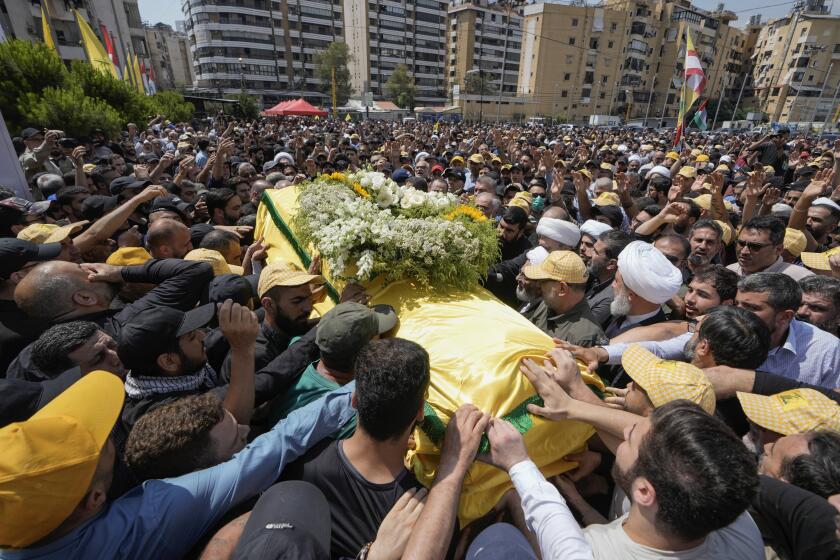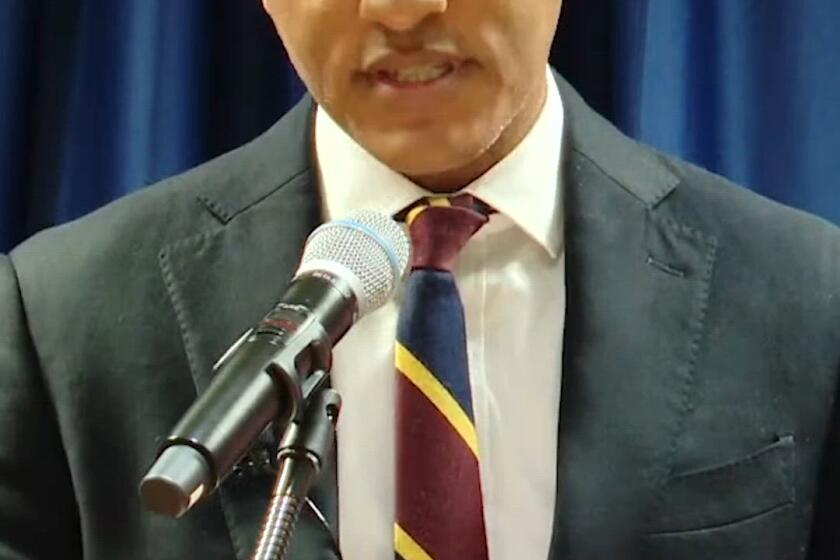Los Alamos Nuclear Whistle-Blower Is Reassigned
A top official at the Los Alamos National Laboratory who has long raised concerns about nuclear safety practices there has been reassigned effective today, a move he sees as an effort to silence his criticisms.
The Department of Energy’s National Nuclear Security Administration reassigned the safety official, Christopher M. Steele, to a job overseeing safety training at research and production facilities across the nation.
Energy officials have described the reassignment as recognition of Steele’s expertise and as an important step in upgrading its training program, but Steele has protested the action and said the transfer would further jeopardize safety at the New Mexico lab.
In recent years, investigations have documented incidents in which Los Alamos workers mishandled radioactive materials and spread radiation to sites in four states; conducted a poorly designed high-explosives experiment that seriously burned the hand of a researcher; and employed lax practices that caused a powerful laser to injure a scientist’s eye.
In recent months, the lab had to shut down operations at its plutonium facility after inspectors found that a third of its fire-suppressing sprinkler system was potentially defective. Sprinkler heads had been painted over and were corroded. And lab officials had neglected to test fire hoses since the facility was built.
In correspondence to senior Energy Department officials last month, Steele said that his efforts to increase surveillance at Los Alamos would collapse if he were transferred and that there was no plan to ensure that surveillance activities would continue after he left his current position. He will continue to be based at Los Alamos.
Steele, who is among the highest-level whistle-blowers in the federal government, is a 13-year veteran at the Energy Department and holds a senior executive position on the federal payroll. He has a nuclear engineering degree from MIT.
He has long irritated bureaucrats in Washington. He was suspended for four months in 2003 on what he said at the time were trumped-up allegations of a security violation. No official charges were ever filed, and he was reinstated to his job and to his special clearance for nuclear weapons secrets.
Energy Department officials say their reassignment of Steele is not a punishment, but rather high praise for his expertise. Linton F. Brooks, chief of the National Nuclear Security Administration, said in an interview last week, “I think I have done something really good for the country.” He said he was limited in what he could say about Steele because it was an internal personnel matter.
An agency spokesman said Sunday that Steele’s new role would give him “even greater visibility and is going to have more of an impact on facilities across the country.”
The official added, “Brooks really likes the way this guy thinks about safety.” Last year, Brooks decided that training was the key to greater safety at nuclear weapons facilities; he met with Steele and said he wanted Steele to lead a new educational program to create a cadre of safety experts.
According to Steele, Los Alamos laboratory officials are not taking safety seriously enough. Local Energy Department officials have twice threatened to fire him for protesting safety conditions, Steele said.
The Energy Department is considering a plan, Steele said, to delegate greater safety oversight to the laboratory in a coming reorganization. The lab has been operated under contract with the University of California, but on June 1, management will be taken over by a consortium that includes UC, Bechtel National and two other private corporations.
In a March 13 letter, Brooks outlined a plan to shift safety oversight toward “verifying whether the contractor was operating with adequate internal oversight processes.”
“The plan is not safe,” Steele contends. “That is what I was trying to protest.”
Steele points to what he says is a poor safety record at the lab, involving crane accidents and electrical shocks as well as mishandling nuclear materials and storing plutonium unsafely.
In July 2005, for example, a Los Alamos worker opened a shipment of radioactive material in which the packing material was contaminated. The problem was not discovered for 11 days, during which time radioactive americium was spread to sites in four states: in the worker’s home, two of his relatives’ homes, and two homes or cars of co-workers, according to a formal investigation report.
The radiation exposure in the worst case was well under annual federal occupational limits, however. The accident was blamed on inadequate controls at the lab.
Steele is not alone in criticizing the lab’s safety. The Defense Nuclear Facilities Safety Board, an independent federal agency set up to monitor safety at federal sites, also has raised concerns about Los Alamos. In the latest monthly reports, the board’s representative at the lab reported shortages of safety officials at the lab, slowdowns in the removal of hazardous radioactive materials and concerns about the new safety oversight plan.
And the Project on Government Oversight, a watchdog group in Washington, has criticized lab safety in testimony before Congress.
More to Read
Sign up for Essential California
The most important California stories and recommendations in your inbox every morning.
You may occasionally receive promotional content from the Los Angeles Times.











